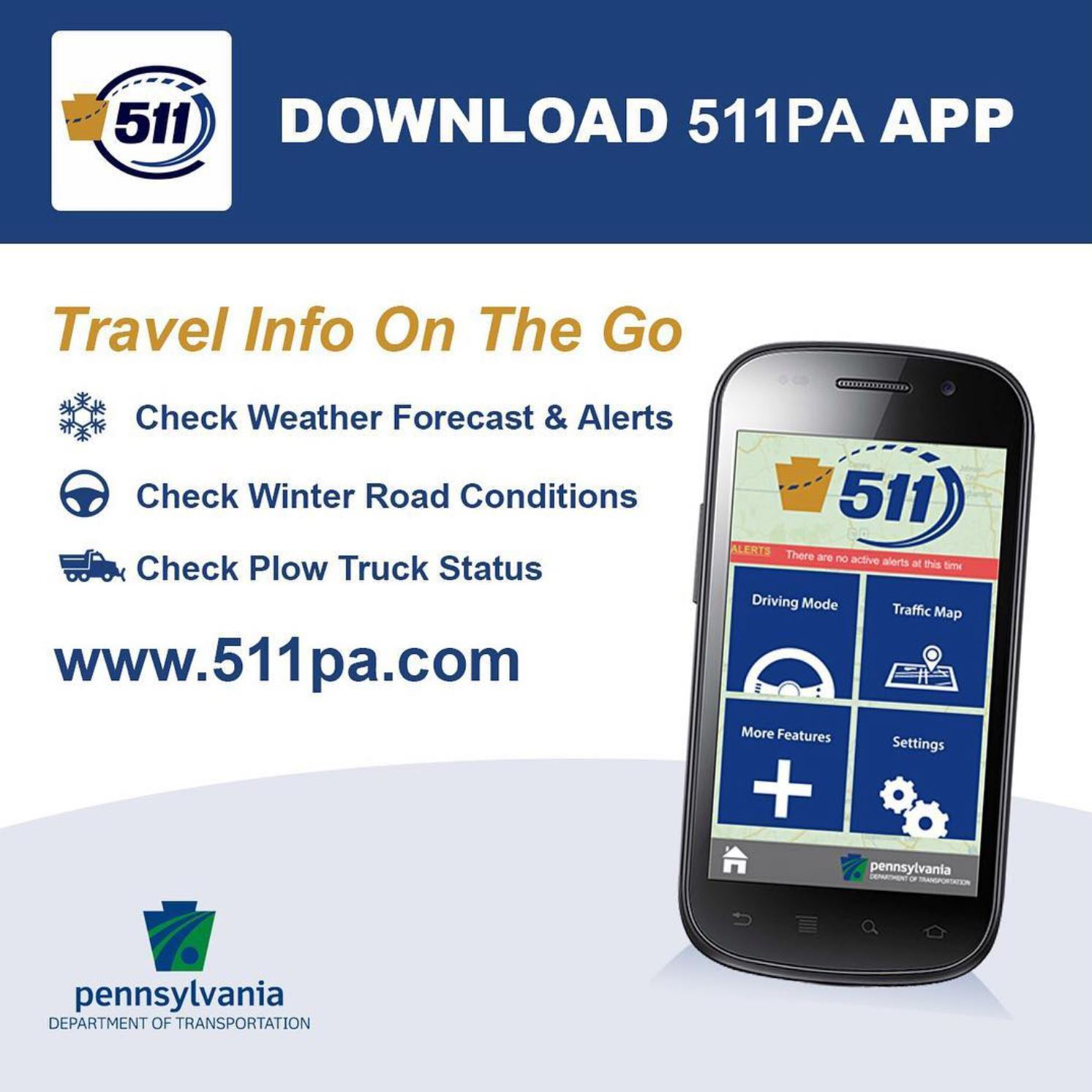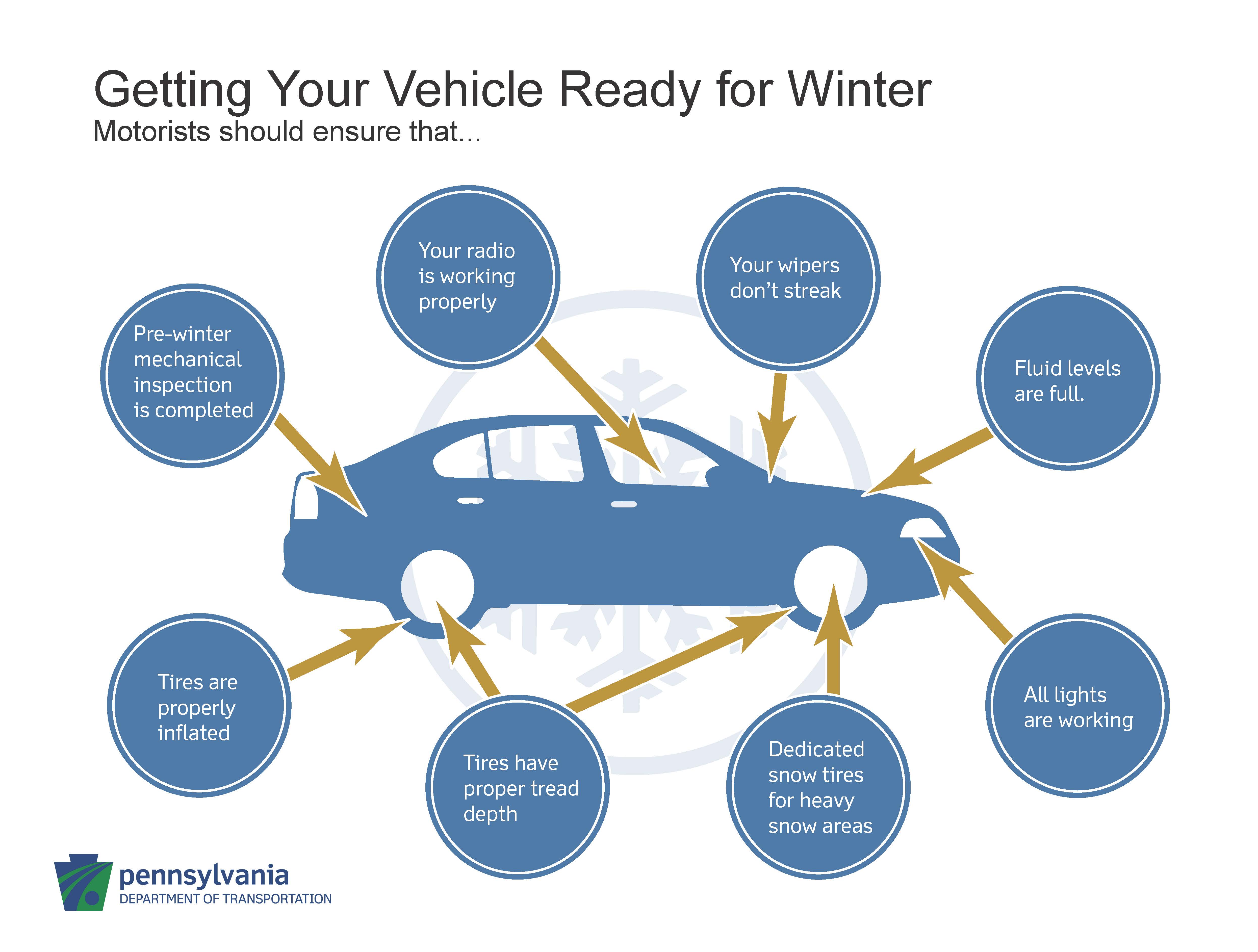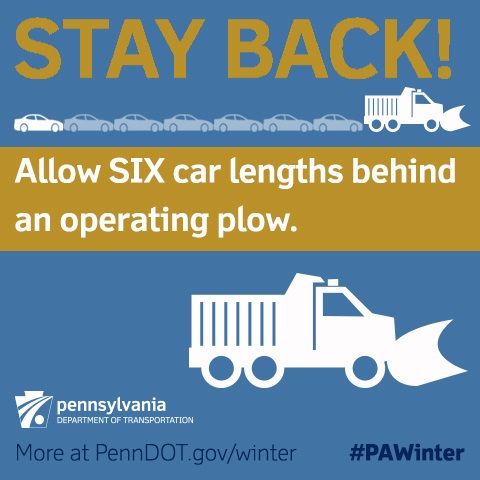It's that time of year where much of Pennsylvania will start seeing serious winter weather. In recognition of Winter Driving Awareness Week, PennDOT encourages motorists to always be prepared for any kind of weather.
"Refreshing yourself on winter driving and preparations is just as important in the winter as it is the rest of the year," Richards said. "No matter whether they are taking short or long trips, it is important for drivers to ensure they are prepared for any type of weather and road condition."

To help make decisions regarding winter travel, motorists are encouraged to "Know Before You Go" by checking conditions on more than 40,000 roadway miles, including color-coded winter conditions on 2,900 miles, by visiting
www.511PA.com. 511PA, which is free and available 24 hours a day, provides traffic delay warnings, weather forecasts, traffic speed information and access to more than 860 traffic cameras. Users can also see plow truck statuses and travel alerts along a specific route using the "Check My Route" tool.
511PA is also available through a smartphone application for iPhone and Android devices, by calling 5-1-1, or by following regional Twitter alerts accessible on the 511PA website.
Check Your Vehicle

If you plan to drive in the winter months, please have your vehicles checked by a trusted mechanic. The parts that should be reviewed include the cooling system, battery, hoses, and drive belts. All fluids should be filled, lights are working (both front and rear), wiper blades work smoothly (without streaking), and tires often for the correct level of air pressure. Mechanics know the adequate tire-tread depth to perform on ice and snow.
A vehicle emergency kit should be prepared or restocked containing items such as non-perishable food, water, first-aid supplies, warm clothes, a blanket, cellphone charger and a small snow shovel. Motorists should tailor their kits to any specific needs that they or their families have such as baby supplies, extra medication and pet supplies.
Motorists should be aware that all vehicles should be fully clear of ice and snow before winter travel, especially on head and tail lights. If snow or ice is dislodged or falls from a moving vehicle and strikes another vehicle or pedestrian causing death or serious bodily injury, the operator of that vehicle could receive a $200 to $1,000 fine.
Watch for Snow Plows
When winter weather occurs, PennDOT urges drivers to be extra cautious around operating snow-removal equipment. When encountering a plow truck, drivers should:
- Stay at least six car lengths behind an operating plow truck and remember that the main plow is wider than the truck.
- Be alert since plow trucks generally travel much more slowly than other traffic.
- When a plow truck is traveling toward you, move as far away from the center of the road as is safely possible, and remember that snow can obscure the actual snow plow width.
- Never try to pass or get between several trucks plowing side by side in a "plow train." The weight of the snow thrown from the plow can quickly cause smaller vehicles to lose control, creating a hazard for nearby vehicles.
- Never travel next to a plow truck since there are blind spots where the operator can't see, and they can occasionally be moved sideways when hitting drifts or heavy snowpack.
- Keep your lights on to help the operator better see your vehicle. Also remember that under Pennsylvania state law, vehicle lights must be on every time a vehicle's wipers are on due to inclement weather.

In addition to driving safely around plows, motorists are urged to drive according to conditions. If motorists encounter snow or ice-covered roads, they should slow down, increase their following distance and avoid distractions. Last winter in Pennsylvania, preliminary data shows that there were 440 crashes resulting in 221 injuries on snowy, slushy or ice-covered roadways where aggressive-driving behaviors such as speeding or making careless lane changes were factors.
For more information on safe winter travel, an emergency kit checklist and information on PennDOT's winter operations including a video, visit
PennDOT.gov/winter. Additional winter driving, and other highway safety information is available at
PennDOT.gov/safety.
Follow PennDOT's social media accounts —
Facebook,
Twitter, and
Instagram — for the latest winter-weather updates.